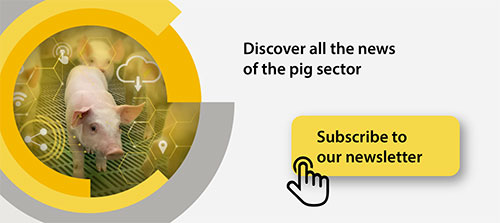Blog
Blog
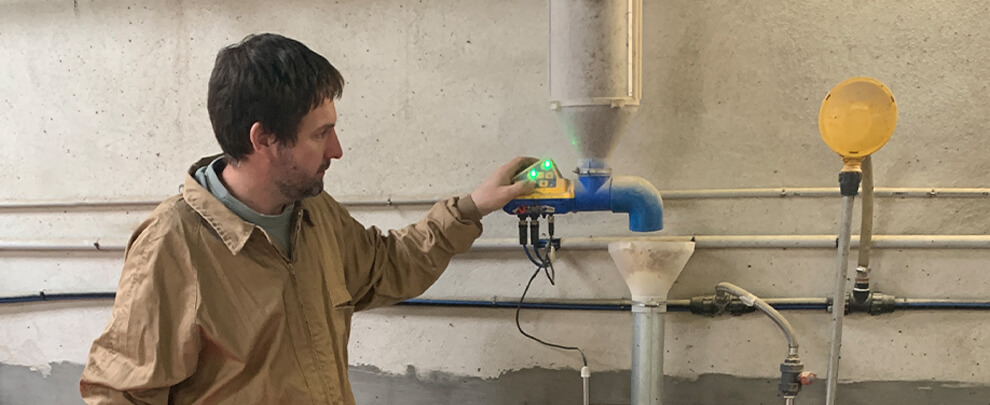
D. Pascual: “With the Dositronic M, we’ve have achieved one more piglet per sow”
21st March 2024 - Success stories
Linked to the livestock environment since his childhood, Daniel Pascual took the reins of the family business approximately 20 years ago. What was originally a farm of 300 sows has gradually grown thanks to the dedication of Daniel and his brother Francesc. After successive expansions, in 2021, they reached a capacity of 1,700 sows, and they did so with a clear commitment to technology with the installation of Rotecna’s electronic feeding system, the Dositronic M, with which they have already achieved excellent production results.
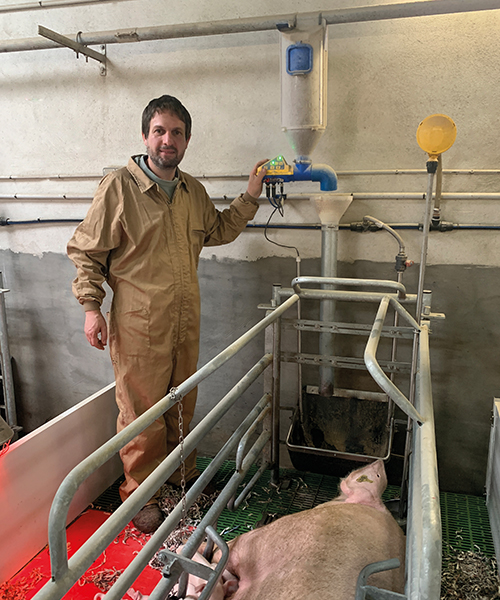
Daniel Pascual in a farrowing pen. Photo: Rotecna.
When and why did you decide to get into farming?
I entered this world through family tradition and vocation. My father was a rancher, and for a long time, he worked as a cattle farmer, although in the end, he transformed the farm into a sow’s farm. Therefore, livestock farming has always been present in my home; for me, it has been a vocation, something that I have always liked.
What is the origin of the farm? How has it evolved?
The farm was created in 1997 and initially had 300 sows. When I joined the business, in around 2004, we expanded to 750 sows. Over time, we have grown in phases, little by little, and when my brother joined the company, we finished giving the business a boost with a new expansion plan, with which we reached 1,700 sows. We currently work with Inga Food, one of the largest integrators nationwide.
How is it distributed?
In gestation, we have two mating areas and three group gestation houses. On the other hand, in maternity, we have two sheds with 392 farrowing pens (20 farrowing pens per room) and a small one with a capacity for about 140 sows to prepare them for farrowing. Finally, there are two transition sheds with seven rooms each and a total capacity of 5,400 piglets.
Why did you choose the Dositronic M electronic power supply system?
It is a system that allows us to control the feeding of the sows well, and for me, who controls it from outside the farrowing rooms, it helps me check if the sows have eaten well or not eaten. In addition, the different feeding curves offer a wide range of possibilities when feeding them. Since you can give from one to eight feedings a day, you can control the kilos of feed you give, apply winter or summer schedules, specific curves for gilts or non-gilts, etc. We also decided on this system because of the manual labour savings it entails and because it impacts the tranquillity of the room, as there is no schedule to feed the sows. In addition, we have noticed significant productive benefits from the use of Dositronic.
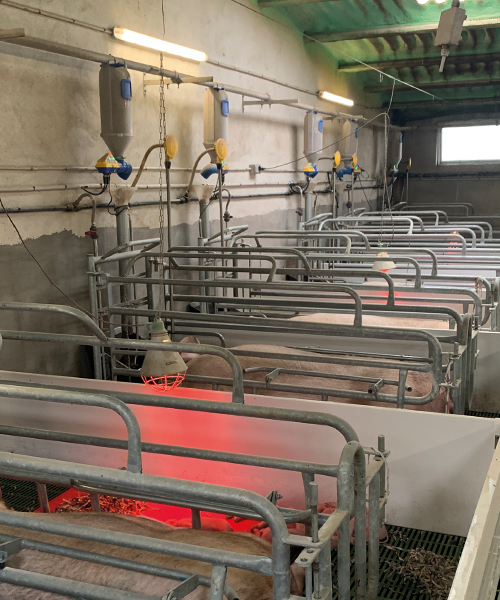
Interior view of one of the farrowing rooms. Photo: Rotecna.
What are these productive benefits?
Above all, we have seen improvements in the growth of the piglets and the amount of milk the sows produce. In addition, with the Dositronic M, we have achieved one more piglet per sow. On the other hand, we have also managed to make it more even when the sow goes out to mate.
How many feed curves do you work with?
We work with three feeding curves: one for gilts, one for multiparous with a little more feed since gilts don’t eat as much, and now I’m trying another with six feedings a day, which I think the sows eat a little more feed with.
How is the feed management with the Dositronic M?
Once the curves have been assigned to each sow, what is done every day is to check on the computer the sows that have not eaten, which the truth is that there are usually very few. In a farrowing shed with 392 places, only seven or eight might not eat. So, you go straight to those sows to see why they haven’t eaten. This is a great advantage since you don’t have to worry about the others, with the time savings this represents.
What does it mean to be able to have all consumption data digitalised?
It is an advantage because it makes it easier to check the data. You have sow histories with information on the sows’ consumption during each farrowing, which is essential information for us. In addition, in the same lactation phase, we can see what the sow ate ten days ago, which is impossible with other systems.
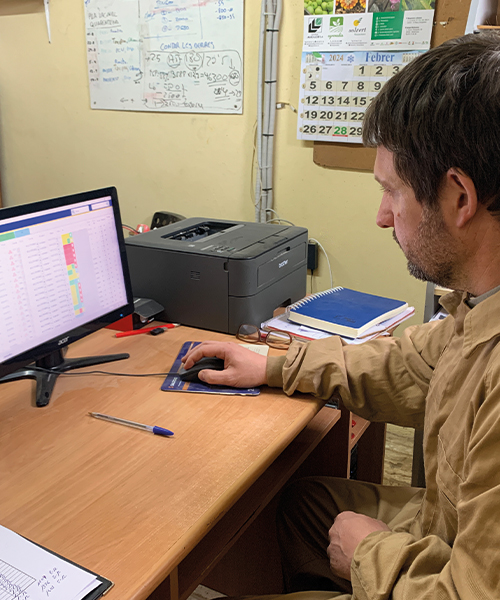
Daniel working with the Dositronic M program. Photo: Rotecna.
In addition to the Dositronic M, what other Rotecna products have you installed on the farm?
Almost all the products we installed are from Rotecna. We have dispensers, feeders, slats, heating plates, etc., all of which have yielded excellent results. We also installed the TR5 hopper at weaning, which is very functional and allows us to regulate the feed quantities very well.
On the other hand, what are your main health concerns?
The main concern is the PRRS we have suffered over the last year, which has been very hard. The other primary concern for the industry is African swine fever (ASF). We don’t have it here yet, and I hope it never does, but the truth is that it’s getting closer and closer. The entry risk is high with the large influx of piglets from abroad.
What future challenges do you face for the farm?
The area we are in is already challenging to grow in, so our goal is to reduce costs. To do this, we want to adapt as much as possible to all the technological advances available for pig farming, as we have already done with Dositronic M or cleaning robots.







